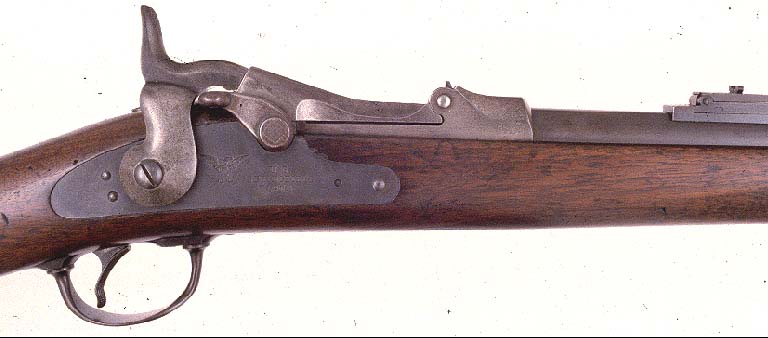
The title, Model 1877, pertains
only to carbines. Springfield did not designate a Model 1877 rifle or
cadet rifle. The change from Model 1873 to Model 1877 was prompted by
the addition of the cleaning rod holes in the butt stock of the carbine
which required a heavier stock wrist to off-set any weakness the holes
may have caused. The rifle and cadet rifles did not have the cleaning
rod modification so they retained there Model 1873 designation.
Many collectors use the name, Model 1877 for rifles and cadet rifles as
a means of denoting their time of production. However, Springfield only
referred to the Model 1877 when discussing carbines.
The model change was brought about by the Little Big Horn battle of
1876, when
General George Custer and his men were killed. It was the military's
conclusion that
access to cleaning rods during the battle would have been advantageous
for removing lodged shell casings.
At this time, it is thought that an unaltered Model 1877 carbine, made
in early 1877, could have a Model 1873 rear sight. There seems to be
some question whether the Model 1877 Type I sight was made for carbines.
This point will require further research.
Model 1877 Carbines have thick stock wrists and are found with a variety
of breech
variations such as: gas port depth, receiver width, barrel tenon form
and high and
low arch breech blocks. These arms are difficult to find with
correlating serial numbers
and federal inspection marks.
|
|



